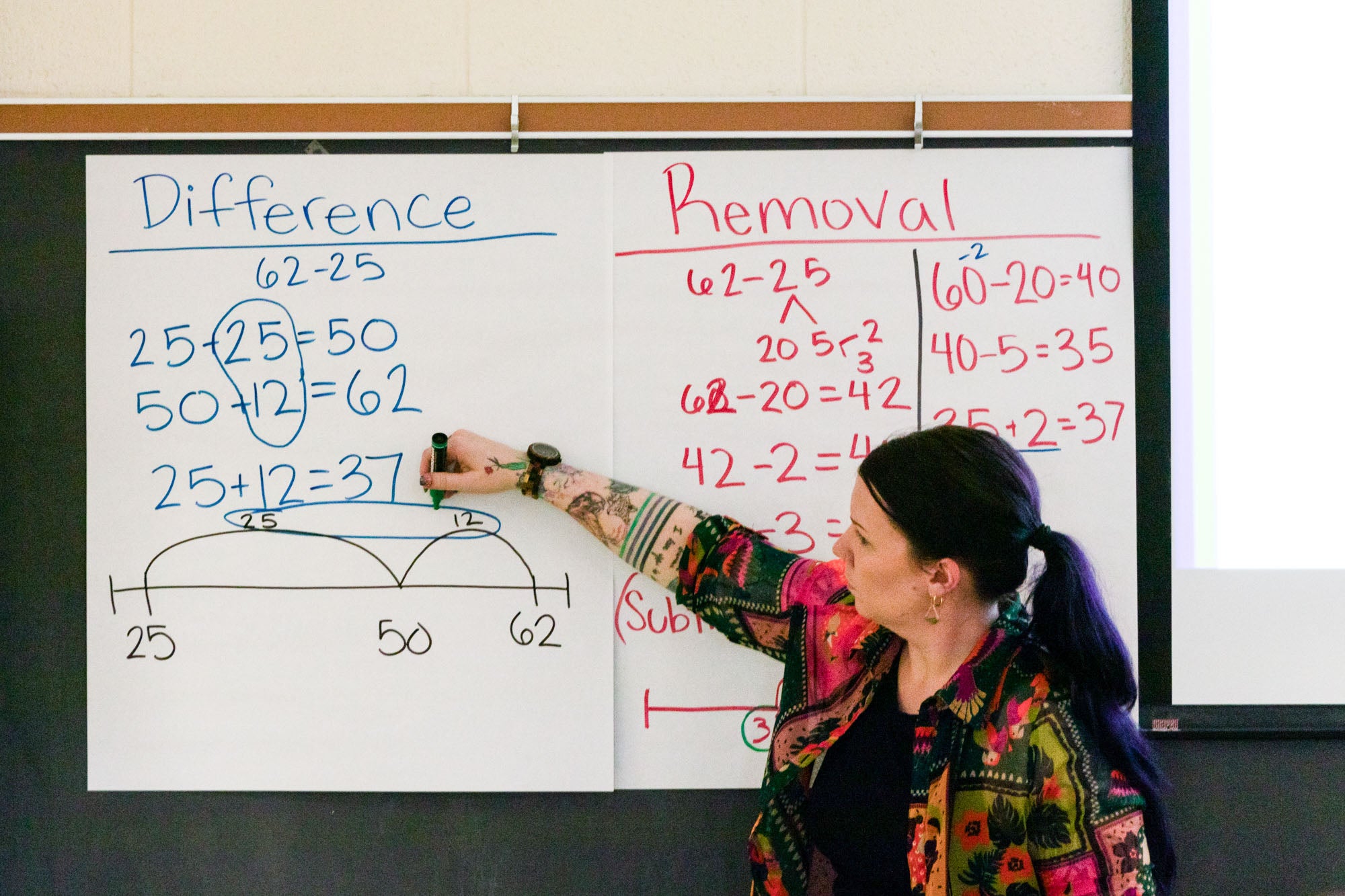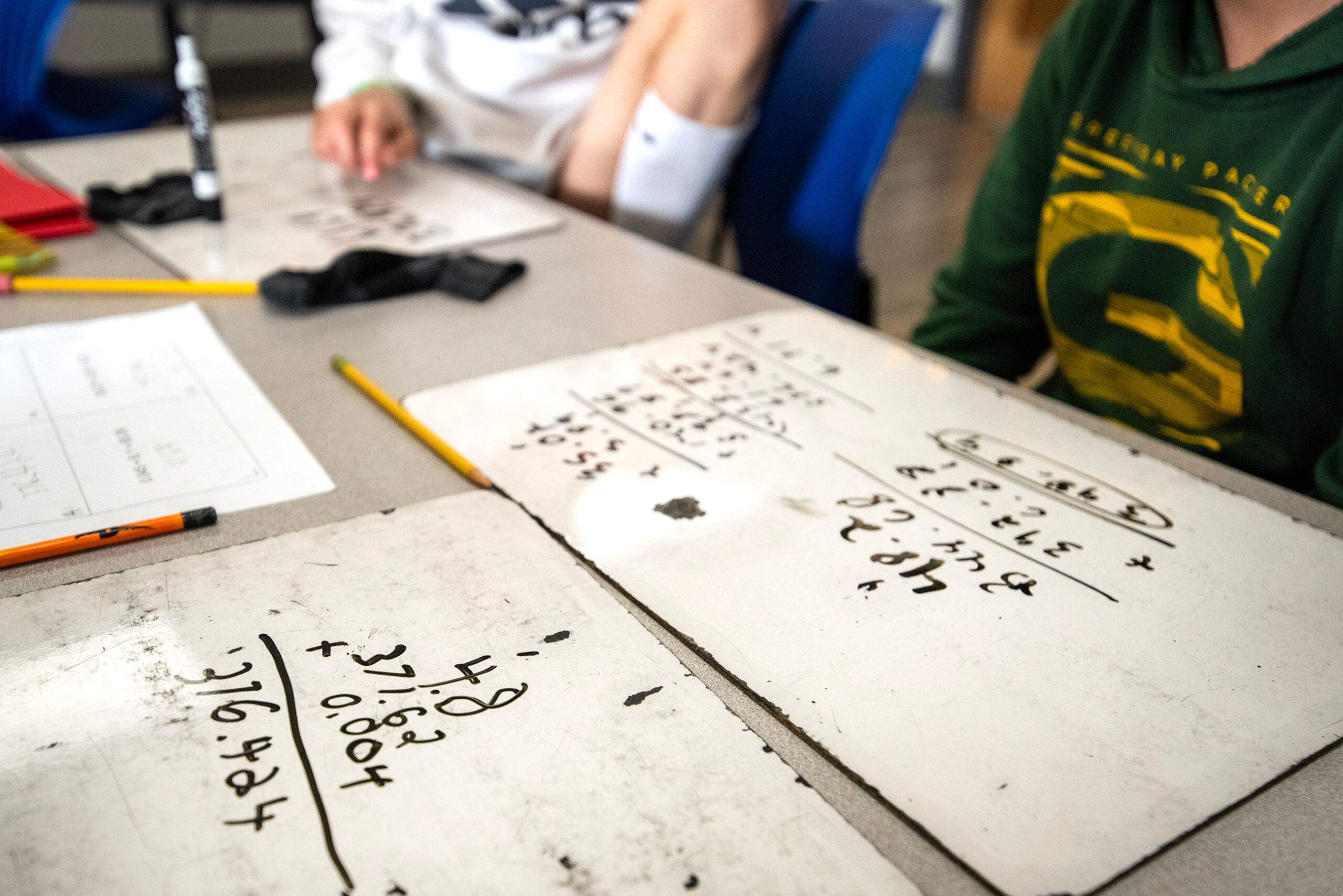This story about teaching math was produced by The Hechinger Report, a nonprofit, independent news organization focused on inequality and innovation in education. Sign up for the Hechinger newsletter.
On a muggy afternoon in late June, about 20 kindergarten through second grade teachers sat in a classroom on the third floor of Milwaukee’s North Division High School. The air conditioning wasn’t working properly, but the heat didn’t seem to bother the teachers, who were absorbed in a math lesson.
Danielle Robinson and Alicia Socha, two teachers in the district, led the lesson.
News with a little more humanity
WPR’s “Wisconsin Today” newsletter keeps you connected to the state you love without feeling overwhelmed. No paywall. No agenda. No corporate filter.
“I went to the store to buy some fruit. I bought five apples and four bananas. How many pieces of fruit did I buy?” Socha asked.
The elementary teachers in the room solved the problem quickly. But the solution wasn’t the point.
The teachers spent more time discussing what type of problem this was. Describing and deconstructing it helped the teachers reach a deeper understanding of not only how it works but how to explain it to their youngest learners.
“Put yourself into the mind of a child,” Robinson said.
Teaching counting and basic arithmetic sounds like a simple task. But early-childhood and elementary teachers have the daunting task of introducing abstraction to their students: What is a number? What does it mean for a number to be bigger? What does it mean to be a part of a whole?
Across the hall, Beth Schefelker and Claire Madden, two other math education specialists, led a group of teachers and principals in adding fractions. Since 2022, the district has spent close to $1 million in COVID-19 relief funds to pay the coaches, principals and teachers to attend these sessions.
Many of these teachers never saw themselves as “math people,” but they surprised themselves.
Kayla Thuemler, a first grade teacher, added some fractions using a number line, where fractions are visually arranged along a horizontal line, similar to using a ruler. Thuemler had never seen fractions taught using a number line. But seeing fractions with different denominators on the same number line helped her see fractions as a more coherent system.
“Why am I enjoying myself right now?” she asked colleagues. “I hate math.”
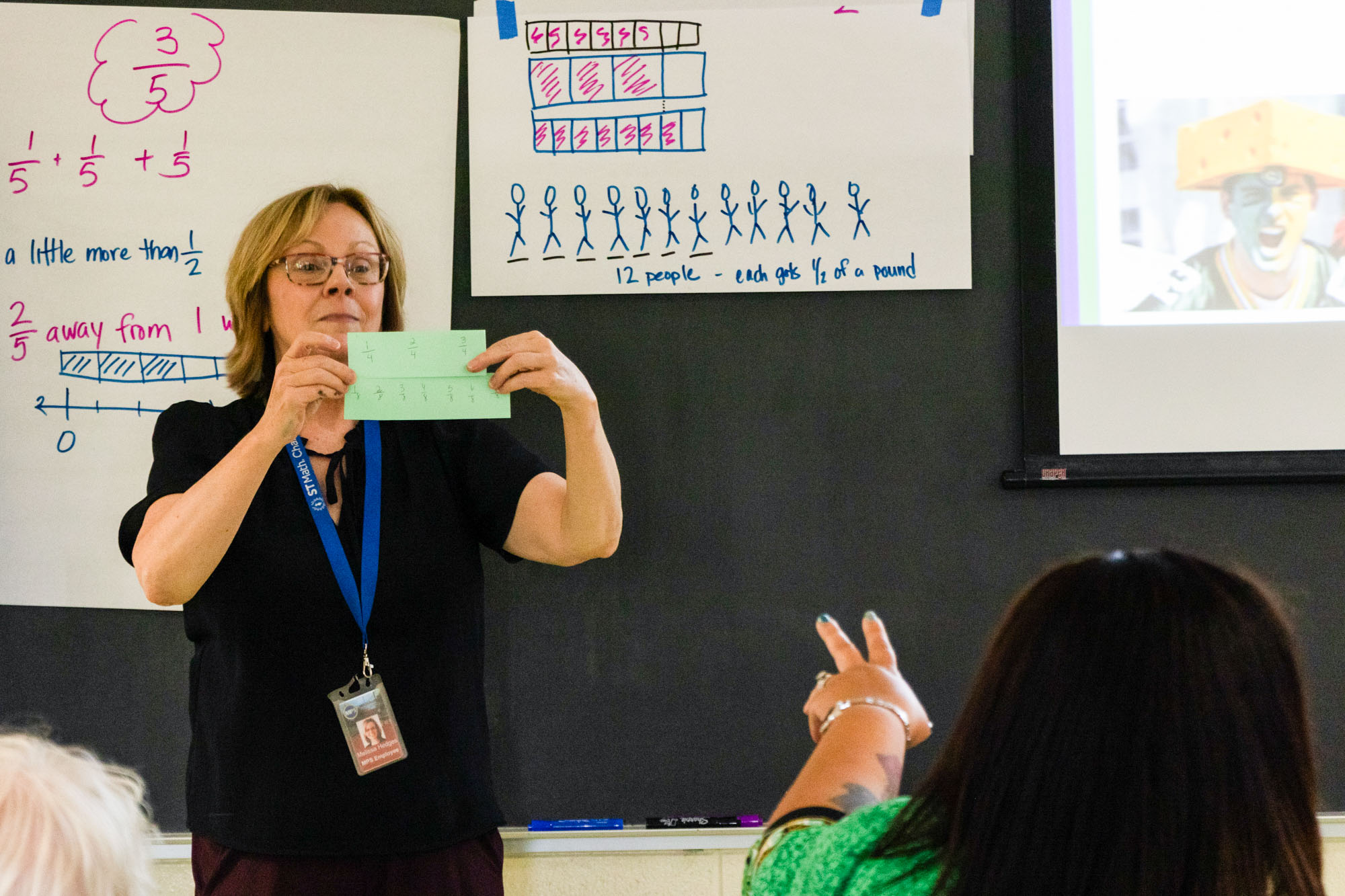
Melissa Hedges and DeAnn Huinker strolled back and forth between the two classrooms. They shared giddy glances when they saw the teachers get excited about math.
Hedges oversees all things math for the Milwaukee district’s elementary and middle schools. Huinker, a professor who advised Hedges’ doctorate in math education at the University of Wisconsin-Milwaukee, is a legend among Milwaukee’s math teachers.
Huinker led a math education revolution in the district when, between 2004 and 2014, almost every teacher in Milwaukee Public Schools received this type of training. Veteran teachers refer to this era as the golden years of math instruction. New district leaders abruptly ended that work.
Ten years later, the teachers gathered on this balmy afternoon are the inheritors of Huinker’s legacy, tasked with preserving a vibrant culture of collaboration and a commitment to helping teachers master math.
“Every teacher wants to learn and do a better job teaching,” Huinker said. “When teachers are learning, students are learning.”
Early in her career, Huinker dedicated herself to solving the problem of inequitable achievement in math, whether measured by test scores, grades or more qualitative surveys about students’ attitudes toward the subject. In the early 2000s, she saw a grant from the National Science Foundation as a possible solution for Milwaukee’s public schools.
The NSF, an independent federal agency, offers funding for math, science and engineering education in all 50 states. In 2003, the NSF awarded Huinker $20 million, the largest amount ever awarded to UW-Milwaukee, to establish a partnership between the university and the local school district.
Huinker’s proposal was to have math education experts teach teachers more math while getting constant feedback from teachers on obstacles in the classroom. In 2002, a coalition of teachers, professors and administrators led by Huinker announced the Milwaukee Mathematics Partnership.
“It’s like all the stars aligned,” she said. “You had the university professors from education and mathematics, as well as the Milwaukee Public Schools superintendent, who was very supportive.”
The $20 million allowed the district to hire 120 math teacher leaders who would serve as a crucial piece to the system Huinker had imagined. Each of the 120 schools had a teacher leader, who would serve as the liaison between Huinker and her university colleagues and the classroom teachers across the district.
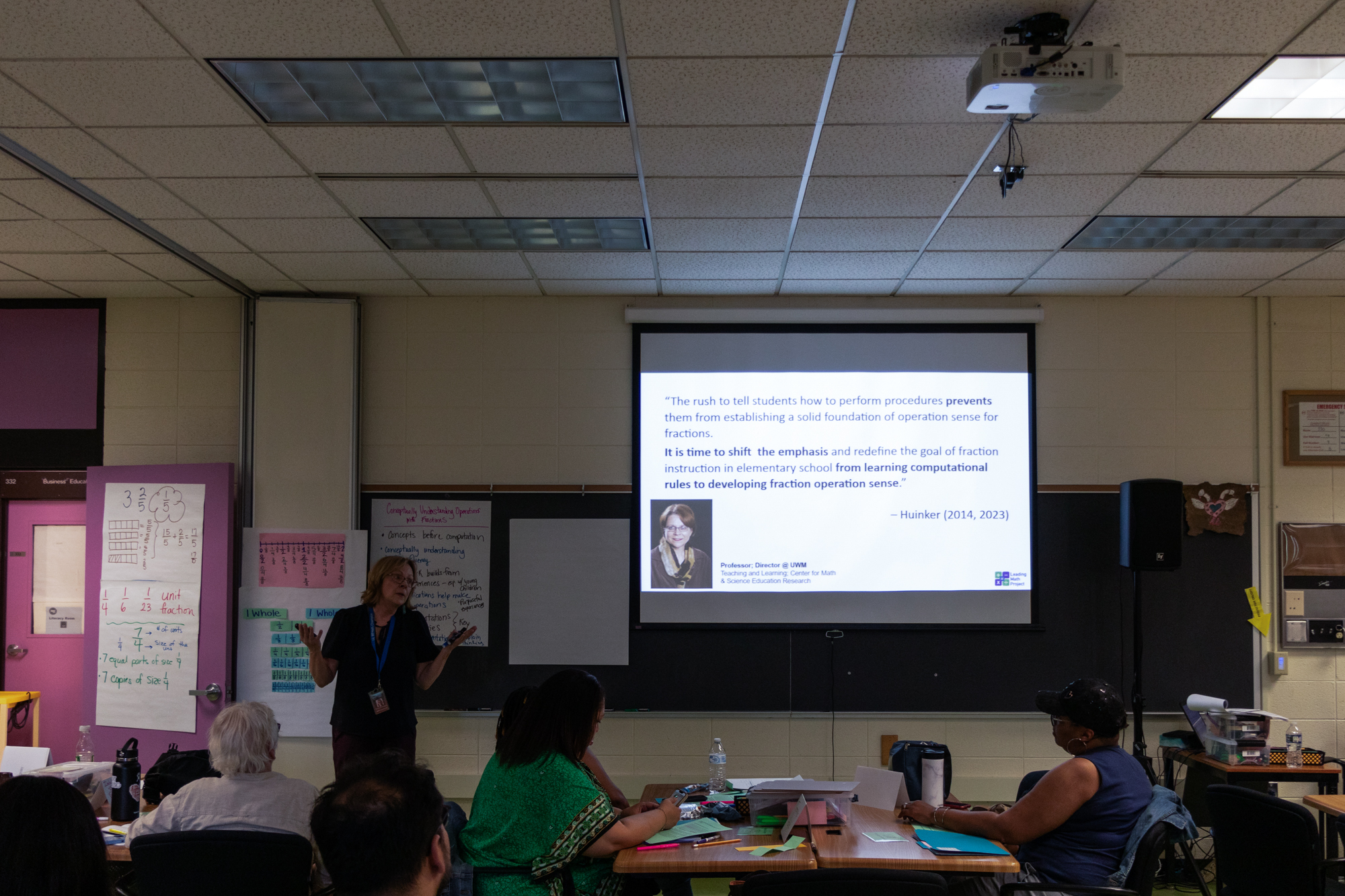
Beth Schefelker was one of those teacher leaders. She was “bright-eyed and bushy-tailed” about the partnership when it started, but she said she quickly ran into roadblocks. While some district administrators were on board, others were less enthused.
Schefelker recalled one meeting with a principal who leaned back in his chair, put his feet up on the desk and said, “Convince me why I need to be a part of this.” Another principal told her, “You’re just another woman asking me to take a leap of faith.”
Schefelker responded, “What we’re doing is not working.”
Before the partnership, the district’s approach to math resembled what math instruction looks like today in many schools across the nation — a patchwork of different methods and approaches. The partnership sought to bring more consistency among educators in a way that reflected the conceptual cohesion of mathematics as a discipline.
But none of this would be possible if teachers themselves didn’t understand the math.
While teacher leaders like Schefelker worked in individual schools and Huinker managed the partnership from the university, Henry Kranendonk mediated from the district office. He helped develop a “spectrum” that became the centerpiece of the program.
First, the district’s teachers agreed what students in each grade should learn in math and made sure these learning goals met state standards. Second, teachers and university professors helped develop standardized assessments for each grade level. Teachers within individual schools would then meet to discuss where students were weak and report these findings to Huinker and her colleagues, who would then develop teacher training sessions.
“At the end of the day, it was gratifying,” Kranendonk said. “We weren’t giving them orders. We were collectively trying to figure out the best form of instruction.”
In the classroom, teachers pushed students to reach a conceptual understanding of mathematics, a departure from the “drill and kill” methods of timed tests and memorizing procedures. The goal was to help students understand how different topics within math, everything from whole numbers and fractions to algebraic functions and areas of shapes, are interconnected. Students could then confidently solve unfamiliar problems without relying on formulas or by following the same step-by-step procedures. They would understand that individual problems are just expressions of concepts.
The partnership also gave teachers a say in how the district taught math. The training sessions went over state standards in detail and helped teachers unlearn their own bad math habits, while dispelling any false ideas a teacher might have about not being a “math person.” The training sessions were designed and improved based on the feedback classroom teachers gave to Kranendonk.
Through this ecosystem, teachers discovered just how fragmented math instruction had been in the district. For example, they realized early on that some students didn’t understand the “equals” sign. Schefelker recalled how some students thought the symbol stood for “the answer is” rather than a symbol that represents balance. They had seen the equal sign only in the context of solving problems, and not as one critical component of the language of math.
“The kids didn’t understand equality,” Schefelker said. “All they were doing was going through the process and not really understanding what they were doing.”
Once Huinker and her colleagues intervened through training sessions, teachers started to teach the equal sign differently, using problems like “5+7=__+6” to show how both sides of the equation need to be the same value.
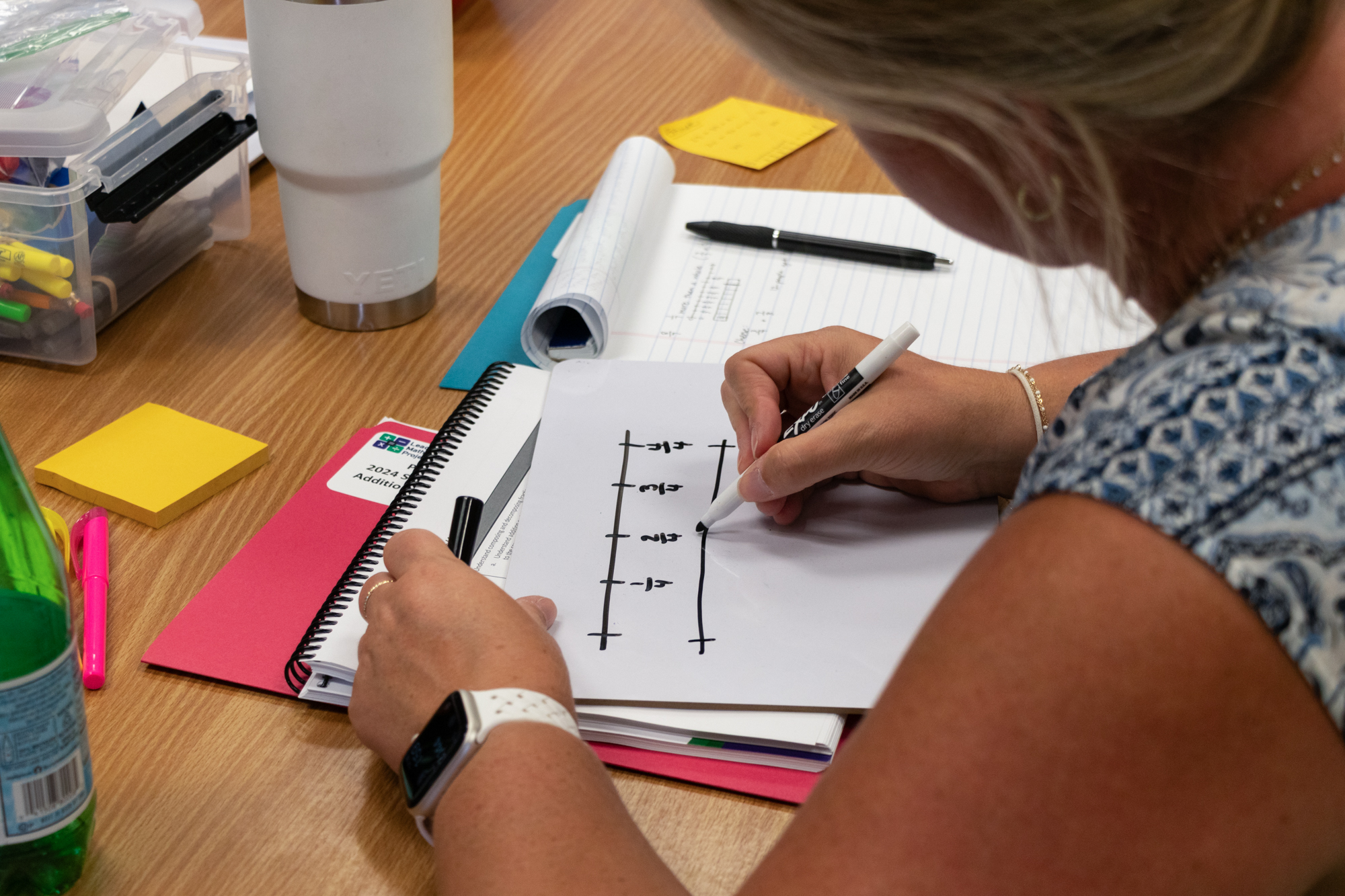
Once the partnership gained momentum, the benefits became obvious, especially in test score data. According to one UW-Milwaukee report, test scores rose by 10 percentage points for some groups. According to a report by Huinker’s team in 2011, one school in the district — 98 percent of whose students lived in low-income households — increased its mathematics proficiency by 40 percentage points. Milwaukee Public Schools became a beacon for math instruction across the country.
A long-term look at the data, however, paints a more complicated picture. In 2004, when the partnership fully launched, about 30 percent of the district’s eighth graders were either proficient or advanced in math, according to Wisconsin standardized test score data. But in the 2005-06 school year, the state created a new standardized test, and scores plummeted for students: That year, only about 10 percent of eighth graders in Milwaukee were either proficient or advanced. That rate for eighth graders peaked in 2012, with about 16 percent reaching proficiency or advanced status. During the partnership, fourth graders saw about an 8 percentage point gain in the rate of students who scored proficient or advanced.
According to Huinker and Schefelker, however, test scores were only the most public-facing sign of improvement. Grades, student interest and teacher satisfaction skyrocketed during those years.
Buy-in from teachers was one reason the Milwaukee Mathematics Partnership worked, Huinker said. The second reason for the partnership’s success was more bureaucratic. Huinker, not the district, controlled the purse strings. Leaders at financially strapped districts like Milwaukee Public Schools constantly juggle competing priorities, and, according to Huinker and Kranendonk, district leaders were tempted to allocate some of the money to other areas of need. Huinker ensured the money would be spent only on math instruction.
“The external funding really gave us a leverage point,” Huinker said. “We were accountable to the National Science Foundation for keeping track of how the money was spent towards the clear goals of the project.”
All this created a tight accountability structure that allowed everyone involved to stay focused on the goal of improving math achievement in Milwaukee.
The NSF money lasted nearly a decade, and the successes continued. When the federal money ran out, the Wisconsin Department of Public Instruction funded the partnership for two years.
Despite receiving national and statewide praise, the Milwaukee Mathematics Partnership ended in 2014, when a new superintendent and curriculum director decided to terminate the district’s relationship with UW-Milwaukee.
Huinker, Kranendonk and Schefelker recalled that the new district officials wanted to have complete district control over math instruction. The end was sudden, a contrast to the amount of time that had been invested into making the partnership work.
“They broke it,” Schefelker said. “It took years of work to thread that needle. It took months to unravel.”
Today, about 12 percent of students in the district, compared to 41 percent statewide, are proficient in math, according to standardized test score data. Wisconsin administers its state tests to students in grades three to eight and grade 10.
Hedges, the current math curriculum director for the district who held several positions during the partnership, recalled a colleague who had once called math the “crown jewel” of Milwaukee Public Schools.
“If you look at our test scores now, we might not be able to say that,” Hedges said.
After the partnership ended in 2014, standardized test scores in math continued to rise incrementally. From 2016 to 2019, overall math proficiency in Milwaukee rose about 1 percentage point, to reach 16.2 percent. Hedges said some teachers remained committed to the partnership’s methods.
“We had such a strong leadership base,” she said. When the partnership ended, “there were 120 math teacher leaders out in the district, and some of them went back into classrooms.”
Huinker continues to train teachers for the district. Since the partnership ended in 2014, district leadership changed again, and there’s been more openness to collaborating with the university. The sessions for early-childhood educators, which meet for four hours a day for about two weeks, include both lessons in math and open forums for teachers to air grievances. The format of these meetings reflect the structure of the Milwaukee Mathematics Partnership, with its focus on math content and fostering collaboration between teachers who need more help teaching math.
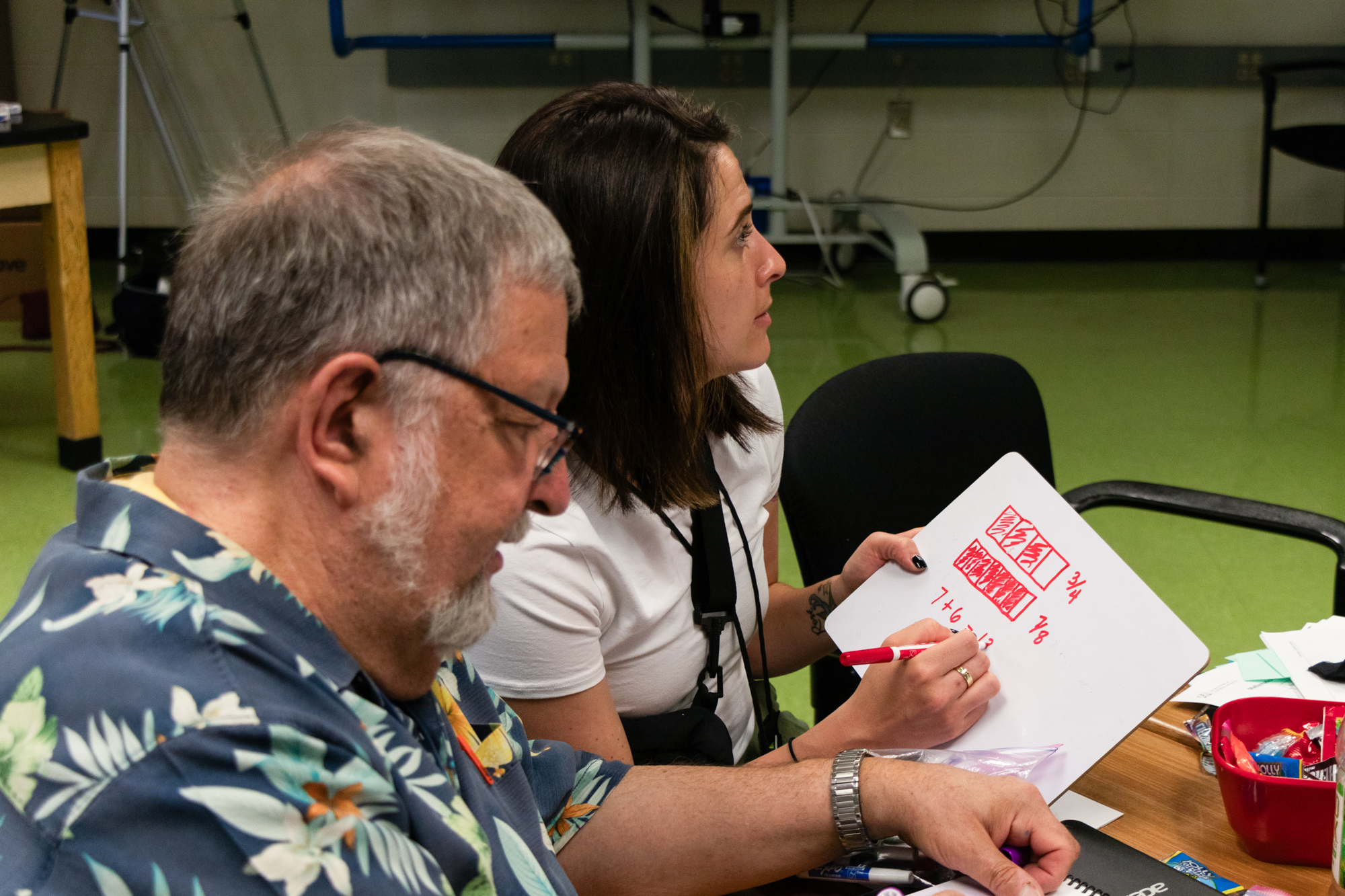
Today, Milwaukee Public Schools is reckoning with fiscal mismanagement, changes to leadership, clashes with the state and tension between administrators and teachers. On top of all that, the district will implement a new math curriculum across its schools this fall. Teachers feel unprepared and lament that they’ll only see it a week before the school year starts.
Although another systemic overhaul is unlikely in the near future, the people who were around during the Milwaukee Mathematics Partnership are trying to pass down everything they’ve learned to the next generation of educators. The focus on the youngest learners is encouraging for newer teachers who got into the profession partly to avoid math.
Danielle Robinson was one of the teachers in the district who helped lead the sessions for early-childhood teachers. She wasn’t around during the partnership, but she adheres to the same goals and methods. Her job, she said, is to translate research in education and childhood development for teachers.
“I felt like I never really learned math, until I was able to learn” from Huinker and Hedges, Robinson said. “I always thought that social studies and literacy were more of my thing. These ladies really did change my life.”
Editor’s note: Phoebe Goebels contributed reporting for this story.
Wisconsin Public Radio, © Copyright 2025, Board of Regents of the University of Wisconsin System and Wisconsin Educational Communications Board.

